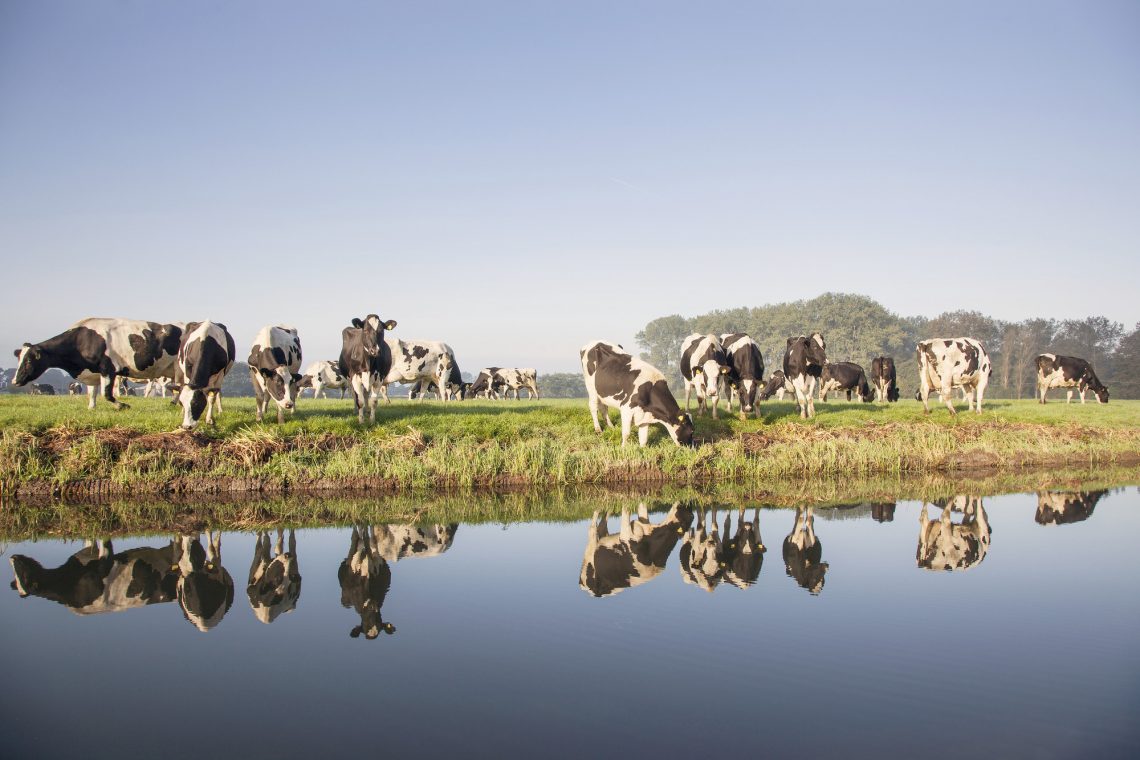Multinational companies are now using technology to calculate their carbon footprint. But how many can say they have reshaped their supply chain to preserve nature rather than deplete it?
Metabolic, a 10-year-old international scale-up headquartered in Amsterdam is proving there are concrete ways for multinationals to address decarbonization goals through reducing the damage to biodiversity — and even restoring it. This is the essence of their work with France’s Bel Group, the agrifood company behind Babybel, The Laughing Cow, Boursin, and Kiri cheese brands.
The key, says Eva Gladek, the company’s CEO and founder, is a holistic and science-based approach.
The laser focus companies currently have on drawing down carbon is a mistake, she says. “The risk is that your new carbon strategy could end up doing damage to the ecosystem,” says Gladek, a former science journalist who went on to earn a degree in industrial ecology, the study of systemic relationships between society, economy, and the natural environment “If, for example you buy crops with a lower carbon footprint that are grown in an area with more water stress you are doing what is called burden-shifting. That is one of the problems of not taking a systemic approach. We need to educate companies to think more systemically instead of potentially playing whack-a-mole down the road.”
Metabolic employs economists, industrial ecologists, scientists specialized in agriculture, forest, and land use as well as social scientists and data scientists. The team uses peer-reviewed scientific data sets to understand a company’s overall impact on nature, including climate change, fresh water, land-system change, nitrogen biogeochemical cycles and biodiversity loss within specific geographies. Metabolic uses that information to pinpoint problem areas and then specifies ways to not only fix a company’s carbon footprint but repair Nature while doing so.
The company’s work with more than 300 organizations in over 40 countries is yet another example of how teaming young companies with established players can help meet the U.N.’s Sustainable Development Goals.
One Mission
Metabolic consists of five organizations: a consultancy, a research institute, venture arm, software studio, and a foundation “with one mission, to help the world move to a sustainable economy,” says Gladek. The consultancy works with specific verticals, namely agriculture and commodities, manufacturing, electronics, chemicals, banking, health care, asset management, food and beverage, fast moving consumer goods and textiles. Clients include Danone, Duracell, C&A, ABN Amro, Walmart, Philips, Pepsico, Olam and Heineken. The research team works on areas where better understanding is needed. It passes on what it learns to the ventures arm., One recent output of that team is called Fresh Ventures. Fresh Ventures enlists entrepreneurs with a passion for regenerative agriculture and helps them create startups tackling specific issues in the food system, says Gladek. The software division codifies Metabolic’s knowledge and produces digital tools that can help corporates engage with their suppliers and meet their ESG targets.
Setting Science-Based Targets
Metabolic points to a recent pilot for setting science-based targets as an example of how it works with corporates. Metabolic helped Bel Group, which has been producing cheese since 1865, to establish ecological thresholds, targets, and action plans on biodiversity loss and soil and water usage for the preservation of species and ecosystems in a specific dairy farming region in The Netherlands and then throughout Europe.
The team, led by Brian Shaw, Metabolic’s Director, Agrifood and Biodiversity, showed Bel Group what areas of its procurement and operations to target and where it can make the most positive impacts on biodiversity. Often these types of assessment can demonstrate to a company the outsized impact of some of the ingredients it uses in relatively small proportions, says Shaw. Metabolic was also able to point out the variations in the impact of the larger flows of materials in different geographies. But, says Gladek, “we don’t advise our clients to stop sourcing from problematic areas because if we did then others would continue to buy there.” Metabolic encourages its clients to instead engage with suppliers on how to transition to more nature-friendly practices.
Combining Bel Group’s primary data with science-based methods, the Metabolic team’s assessment showed areas where implementing regenerative agricultural practices can help farms in The Netherlands meet environmental targets. “The work was about calculating local targets and thresholds to restore Nature in the local area, as well as benchmarking where the dairy sector in the area is now,” says Shaw.
Nature Positive Outcomes
Metabolic’s research showed that dairy farms in the region exceeded recommended levels for ammonia emissions, as well as nitrogen soil surplus, and how they can increase the percentage of natural habitat. A framework was developed that advised first addressing actions that avoid and reduce impacts and then specified how to apply methods for operating dairy farms in a way that can restore and regenerate ecosystems. To do that, it looked at the material impacts on nature relevant to the dairy industry. Working with the World Wild Fund for Nature France, Metabolic said it identified local ecological thresholds in dairy farms to determine what is really needed to enable ecosystem resilience and avoid collapse. It then identified societal goals for key performance indicators and used farm census data to set best practices to reach these goals.
The suggested best practices are backed by the scientific community and the Science Based Targets Network (SBTN), a large consortium of nature-related NGOs, companies, and mission-driven organizations, some of whom were also founders of the climate-focused Science Based Targets initiative. Its mission is to build a protocol that will arm companies across many sectors with the appropriate scientific tools for creating an equitable, nature-positive, net-zero future.
Bel is among dozens of SBTN members actively contributing to a corporate engagement program, spearheading science-based targets for nature and sharing best practices with anyone aligning their business with ecological thresholds. The French agrifood company is sharing Metabolic’s findings and their own progress to implement new methods with other SBTN members who want to create a company strategy toward nature-positive outcomes.
The farming system is a great example of why systemic change is needed, says Shaw. If farmers are going to change one crop rotation, how do they deal with the other six? And who is going to buy the nature-friendly crops? Will they be engaging with the same buyers? Is there a need to set up digital marketplaces? Somebody will need to pay a premium. Who will be willing to bear the cost?
“There needs to be a coherent framework,” says Shaw. “We want to understand, within a given landscape, what is the ability of the different land stewards to work together to create a comprehensive ecology; what are the options and who should be involved in a way that fits into the bigger picture.”
Commitment To Purpose
To meet its goal of creating a more sustainable world, Metabolic is engaging with cities and regions on the spatial planning of cities and creating circular economies. It is consulting with industry on how to recycle critical metals needed for electronics and batteries and it is working with the healthcare, textile, and building sectors on how to close loops and build a sustainable economy. It is also working with the finance sector on how to create metrics beyond ESG, says Gladek. Metabolic itself is now transitioning to a steward ownership model like the one recently announced by Patagonia. The concept is that the company’s purpose will be legally enshrined to take precedence over profit. Revenues will be reinvested in high impact projects, she says.
“We have been guiding decision-makers, implementing real-world projects, conducting research and building software for ten years,” says Gladek. “We learned that the key to solving our planet’s crisis lies in systems thinking. Our approach is based on bringing together all of the players within one sector. Together we can create solutions to critical problems and build a world where our economic activities do not transgress any of the planetary boundaries.
This article is content that would normally only be available to subscribers. Sign up for a four-week free trial to see what you have been missing.







